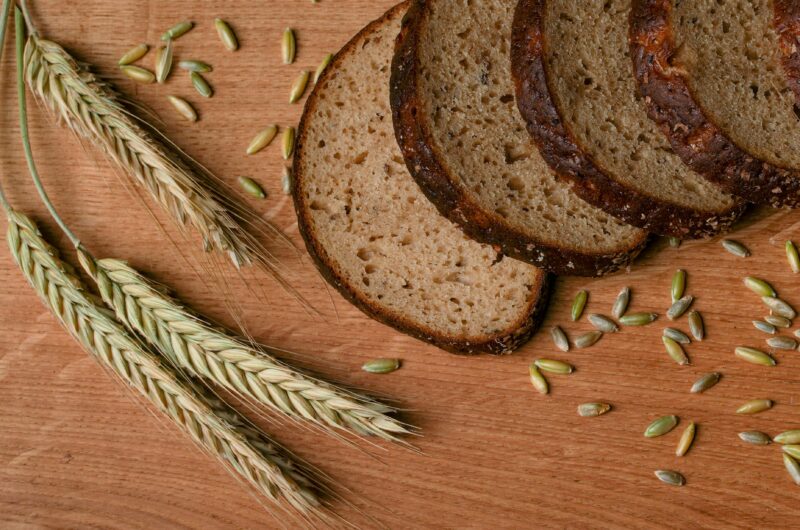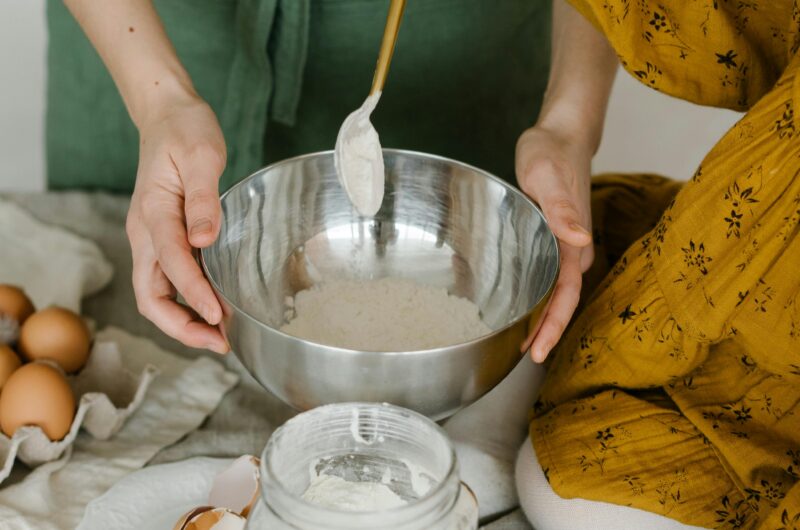History of Flour
Let's start off with a freshly milled flour history lesson
Why should YOU bother using freshly milled flour when its easily available in stores? Read below to find out or check out moy other articles to learn how to mill your own flour, substitute grains and more.
1. Bran
Wheat bran is exceptionally high in fiber, protein, healthy fats, antioxidants, vitamins, and minerals. As a result, many people use it on its own as a dietary supplement to help improve symptoms of constipation and IBS.
2. Germ
The germ, which is the smallest part of the wheat berry, is nevertheless packed with protein, B-vitamins, vitamin E, magnesium, phosphorus, potassium, zinc, and iron. Consequently, it plays a crucial role in the nutritional value of wheat.
3. Endosperm
In contrast, the endosperm consists primarily of carbohydrates, along with some fats and only trace amounts of protein, vitamins, and minerals.
Early freshly milled flour
Historically, people milled flour as needed, even after large stone mills were invented. Typically, individuals would bring their grain to the local mill, have it ground, and then take the freshly milled flour home. They would bake with this flour within a short time, ensuring optimal freshness and nutrition. But why does this matter? To answer that, let’s break down the components of a single wheat kernel.
What is the wheat grain
Wheat grain is composed of three main parts: the bran, the germ, and the endosperm. Importantly, most of the nutrition resides in the bran and germ. The bran is especially high in insoluble fiber, which is essential for healthy digestion. Meanwhile, the germ contains a rich supply of protein, vitamins, minerals, folic acid, antioxidants, and vitamin E. Finally, the endosperm, which makes up the bulk of the grain, is primarily a source of carbohydrates and contains only trace vitamins and minerals.
Invention of Steel Rollers
Around 1870 AD, steel rollers began to replace traditional grindstones. These rollers, which rotate in opposite directions, shatter the grain rather than grind it. As a result, mills could produce much more flour in a shorter amount of time. However, this efficiency introduced a new challenge: freshly milled flour has a short shelf life before it begins to deteriorate, as the oil in the germ quickly turns rancid. To address this, mills started stripping away the germ and bran during the milling process, effectively preventing the oil from contaminating the flour. This method left behind only the endosperm, resulting in a beautiful white flour that, unfortunately, was devoid of nutrition.
The impact of white flour
By the 1930s, it became clear that removing the nutritious components from flour was having serious health consequences. People’s health, particularly among the poor who relied heavily on bread, began to decline. Flour, once a staple full of essential nutrients, had become little more than an empty carbohydrate. Consequently, diseases linked to vitamin B deficiencies, such as pellagra and beriberi, became increasingly common.
What were once considered “rich man’s diseases”-likely because the wealthy consumed more finely sifted, nutrient-poor flours-soon became widespread. As refined grains dominated diets, neural tube defects in infants (linked to folic acid deficiency) and digestive issues like colon cancer also rose.
Once researchers identified flour as the culprit, manufacturers began adding synthetic nutrients back in, including iron, niacin, thiamine, folic acid, and riboflavin. This process gave rise to what we now call “enriched flour.” Although “enriched” sounds beneficial, synthetic vitamins and minerals are not absorbed as efficiently as those from natural sources.
Why should you make the switch to freshly milled flour
Given all this, it’s no surprise that removing the bran and germ, the very components that aid digestion, has contributed to rising rates of IBS, gluten intolerance, and celiac disease. Additionally, bran and germ help slow the breakdown of starch into glucose, which maintains steady blood sugar levels rather than causing sharp spikes. Beyond the issue of bleaching, the nutritional content of today’s food is seriously lacking. That’s why my family, along with many others, has started milling our own flour and replacing store-bought, preservative-laden products with nutrient-rich, farm-to-table foods.
By understanding the history and science behind flour, you can make more informed choices for your health and well-being. Switching to freshly milled flour is a simple yet powerful step toward reclaiming the nutrition that modern processing has stripped away.
Personal Testimony
After years of struggling with IBS symptoms, I was desperate for relief. I tried every diet and supplement out there, but nothing made a lasting difference. The only real help I found was Sourdough bread and that is what my family ate for years. That is until I discovered freshly milled flour. Within weeks of making the switch, my IBS symptoms completely disappeared. I felt lighter, more comfortable, and my overall inflammation noticeably improved.
We started with just yeast recipes because I wanted to make sure it was the flour and not the sourdough. After the initial two weeks of getting used to so much extra fiber in our diet, I found my IBS symptoms gone. Any time we eat out I will experience a return of stomach spasms and IBS symptoms which just continues to confirm to me, just how amazing freshly milled flour is!
But the benefits didn’t stop with me. My husband had previously lost 140 pounds on a strict keto diet, but he always struggled to maintain his weight unless he stayed in ketosis. Once we started baking with freshly milled flour, he found he could enjoy real, homemade bread and still maintain his weight. No more yo-yoing or restrictive eating. We both feel healthier and more satisfied, and our meals are so much more enjoyable. Freshly milled flour has truly transformed our health and our kitchen!
Why sourdough and Freshly Milled Flour Help.
Both freshly milled flour and sourdough fermentation address the issue of phytic acid, a compound in grains that can inhibit mineral absorption and cause digestive discomfort. Sourdough’s long, slow fermentation (with wild yeasts and lactic acid bacteria) breaks down phytic acid, making minerals like magnesium and phosphorus more bioavailable and reducing bloating or discomfort-especially for those with IBS or sensitive digestion. Freshly milled flour, when used promptly, ensures these nutrients are still present and available for this process.
Sourdough fermentation also reduces gluten and FODMAP content, making bread easier to digest for many people with mild sensitivities. Freshly milled flour, being unrefined and high in fiber, slows the breakdown of starch into glucose, helping maintain steadier blood sugar levels and further supporting digestive health.
Check out these links to get started

Selecting a mill
Stone vs Impact? Grind consistency? Electric or hand?

Choosing your Grains
Hard vs Soft? Spring vs Winter? Red or White, Ancient Grains and more.

Converting Recipes
Understanding how grain varieties work and how to substitute different grains. Learn the science behind baking with freshly milled flour.

Recipe Index
Freshly milled flour tips, tricks and recipes.
